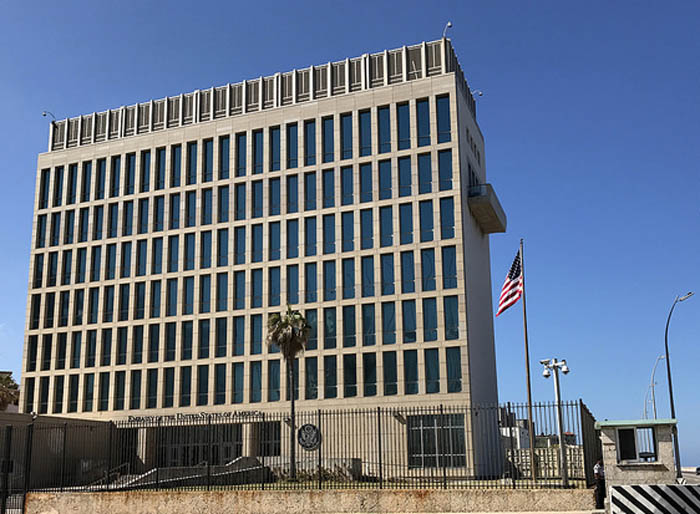Feb. 20 – One year after the United States first sent a diplomatic note of protest to the Cuban government regarding strange sonic noises impacting the health of U.S. government officials working in Cuba, relations between the two countries remains frayed. In the wake of the sonic attacks impacting 24 Americans and eight Canadians, the United States cut its diplomatic staff by half and ordered 15 Cuban diplomats out of Washington.
Even now, investigations into the strange noises have not resulted in any substantial answers.
As the mystery remains unsolved, U.S.-Cuban relations face a crucial test. The U.S. State Department is expected to decide by March 4 whether to send diplomats back to Havana or whether to make its staff reductions permanent.
The Sonic Story
A detailed and thorough Feb. 14 report by ProPublica presents a clear picture of the timeline of events, the ongoing investigations and the recent history of U.S.-Cuban relations. The report is based on interviews with more than three dozen U.S. and foreign officials and a review of confidential government documents. While the entire story is intriguing, perhaps what is most fascinating is the lack of answers.
“After nearly a year of investigation that has drawn on intelligence, defense and technology expertise from across the U.S. government, the FBI has been unable to determine who might have attacked the diplomats or how,” wrote ProPublica Reporters Tim Golden and Sebastian Rotella. “Those frustrations have roiled the U.S. national-security community, putting the FBI increasingly at odds with the CIA over the case.”
Here’s what the reporters discovered:
- The first indication of a problem came when U.S. CIA officers working under diplomatic cover heard cicada-like buzzes in heir homes in Havana’s Western suburbs in late November 2016. They reported that the noise seemed to be directed toward them.
- In addition to the U.S. embassy, incidents occurred at the Hotel Capri and Hotel Nacional.
- Symptoms varied widely, ranging from headaches, hearing problems, nausea, tinnitus and dizziness.
- The FBI ruled out its initial hypothesis on a sonic device attack. The CIA did not concur. Meanwhile, the State Department says, “No cause has been ruled out.”
- Investigators say there’s a possibility “sound was used to mask some other harmful agent or technology.”
- The Cuban government insist they “had nothing to do with the incidents.” FBI investigators did not find any evidence of Cuban involvement, and they privately attest to the Cuban government‘s cooperation with the investigation.
- Russia is an “obvious suspect” with a possible motive and ability to carry out the attack, but officials have not found any real evidence of their involvement.
- The Canadian foreign ministry handled the situation differently, maintaining its staff level and asking for assistance from the Cuban government.
For more on this story, follow the link in the above story to the ProPublica report.
